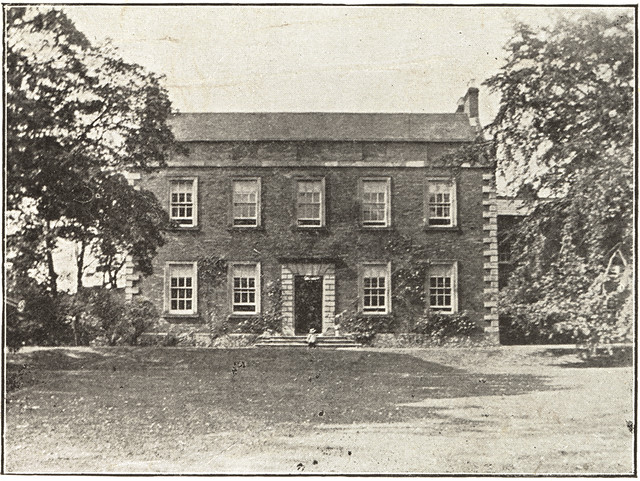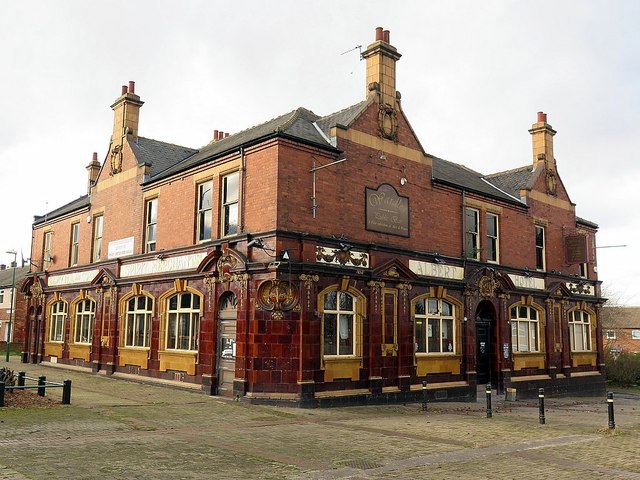Topics > Tyne and Wear > South Tyneside > Hebburn > Hebburn, Historical Account, 1890
Hebburn, Historical Account, 1890
Extract from: Kelly's Directory of Durham, 1890
HEBBURN-ON-TYNE, consisting of Hebburn Quay, Hebburn and Hebburn New Town, is an increasing town, and was created an ecclesiastical parish March 19,1875, out of Jarrow parish, in the Jarrow division of the county, South Shields petty sessional division, union and county court district, rural deanery of Jarrow, archdeaconry and diocese of Durham, and is 4 miles east-by-south of Gateshead, with a station on the Newcastle and South Shields branch of the North Eastern railway. The town is governed by a Local Board of 12 members, formed in 1873. The church of St. Cuthbert, situate in High Ellison street, is an edifice of stone, in the Early English style, consisting of nave, vestry and south porch, to which it is proposed to add transepts and chancel: there are 300 sittings. The register dates from 1861. The living is a vicarage, gross yearly value £320, with residence, in the gift of the Rector of Jarrow and held since 1882 by the Rev. Earle Augustus Langston M.A. of Brasenose College, Oxford. St. Oswald’s is an ecclesiastical district, formed April 8th, 1881, from that of St. Cuthbert: the church, situated at Hebburn Colliery, is an edifice of brick, with stone dressings, in the Gothic style, consisting of two aisles only: there are 350 sittings. The register dates from 1880. The living is a vicarage, gross yearly value £300, in the gift of the Bishop of Durham and the Crown alternately, and held since 1881 by the Rev. Peter Watkin Clarke B.A. of Durham University. St. John’s is an ecclesiastical district formed Jan. 27, 1885, from that of St. Cuthbert: the church, situated at Hebburn New Town, is a building of stone, in the Geometric Decorated style, erected at a cost of £5,000, and consists of chancel, nave, south aisle, north porch and a turret, containing 3 bells: there are sittings for 568 persons. The register dates from the year 1887. The living is a vicarage, gross yearly value £250, in the gift of the Bishop of Durham and the Crown alternately, and held since 1885 by the Rev. Edward Johnston B.A. of Trinity College, Dublin. The Catholic chapel, dedicated to St. Aloysius, is situated on the Prince Consort road, and has schools attached; the Rev. Matthew Toner D.D., B.C.L. is the resident priest. The Presbyterian church, Ellison street, erected in 1872, at an estimated cost of £5,000, consists of nave, transepts, vestry and a tower, with crocketed spire 180 feet in height, and containing a clock: there are several fine stained windows; Rev. A. Lobban is minister. There are Primitive Methodist and Wesleyan chapels. St. Cuthbert’s Sunday school, opened by R. Carr Ellison esq. on Easter Monday, 1882, is a building in the Early Tudor style, and was erected at a cost of upwards of £1,000. St. Andrew’s Mechanics' Institution has a library of about 500 volumes. The Celtic Association has a club in Albert street, and there is a reading-room in John street, Hebburn New Town. The principal chemical manufacturers are the Bede Metal and Chemical Company Limited, Charles Tennant and Partners Limited, the Tharsis Sulphur and Copper Co. Limited; Foster, Blackett and Wilson, lead and white lead manufacturers, and the Hebburn Color Co. Ship building is also carried on, on an extensive scale, by Messrs. R. and W. Hawthorn, Leslie & Co. Limited, who employ from 2,000 to 3,000 hands, and Bewick and Partners Limited have lead smelting works here, their mines being at Haydon Bridge, Northumberland; the cement works of Walter Scott and Co. are also at this place, as well as the engineering works of Messrs. R. Stephenson and Co. Limited, Messrs, Sproat, Marley and Co. Messrs. Nicholson Brothers, and the hemp, wire and rope manufactory of Messrs. T. W. Spencer and Co. Limited. The Drill Hall and parade ground of the 1st Newcastle-on-Tyne Artillery Volunteers is near the station. Capt. John Ralph Carr-Ellison J.P. of Edgeley, Alnwick, is the sole landowner. A new cemetery, of 14 acres, is now (1889) being formed in North Hebburn, for the Hebburn district, at a cost of £2,800. The crops are wheat, barley and pasturage. The soil is clay; subsoil, various. The population of Hebburn, Hebburn New Town and Hebburn Quay with Pelaw-Main in 1871 was 5,627, and in 1881, 11,781. The present estimated population is 16,087. The area is 1,179 acres; rateable value, £60,153.
The Petty Sessions are held at the Police Station, every Monday, at 11.30 a.m. The following places are included in the petty sessional division:-Boldon Colliery, East Boldon, West Boldon, Cleadon, Hebburn Quay, Hebburn New Town, Hebburn Colliery, Hedworth, Monkton, Pelaw, Wardley Colliery, Whitburn, Whitburn Colliery, White Mare Pool.
Schools
- St. Oswald’s, Hebburn Colliery; accommodation for 500; average attendance, 450.
- Board, Hebburn Colliery; accommodation for 400; average attendance, 350.
- Board, Hebburn New Town; accommodation for 850; average attendance, 800.
- Board, Hebburn Quay; accommodation for 1,080; average attendance, 689.
- Hebburn-on-Tyne Catholic, Prince Consort road.
- Wesleyan, Hebburn New Town; accommodation for 250; average attendance, 200.











